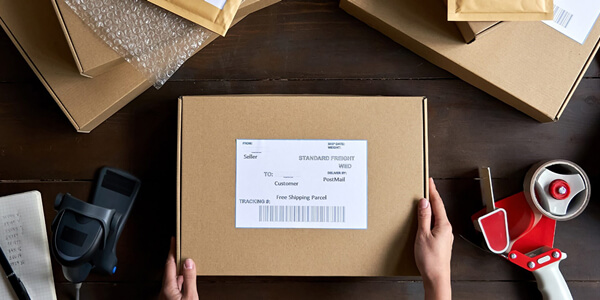
The Rise of Sustainable Fashion: Packaging-Reduced Clothing
Introduction:
As consumers increasingly become aware of the fashion industry's impact on the environment, there has been a growing demand for sustainable fashion. This demand has given rise to various initiatives to reduce waste and improve sustainability across the fashion supply chain, including in packaging. Packaging-reduced clothing is a type of fashion that prioritizes environmental sustainability by minimizing packaging waste.
Packaging-reduced clothing is essential to sustainable fashion because the fashion industry is notorious for generating significant amounts of waste. According to the Ellen MacArthur Foundation, the equivalent of one garbage truck of textiles is landfilled or burned every second. At the same time, less than 1% of clothing material is recycled into new clothing. The environmental impact of packaging waste in the fashion industry is significant, as it contributes to greenhouse gas emissions, pollution, and the depletion of natural resources.
This article aims to explore the concept of packaging-reduced clothing in more detail. We will examine the benefits of this type of clothing, the environmental impact of packaging waste, and the challenges and opportunities in producing and promoting packaging-reduced clothing. In addition, we will discuss consumer demand for this type of clothing and highlight some examples of companies and initiatives sustainably leading the way.
Join us as we delve into the world of packaging-reduced clothing and explore how this emerging trend is helping to create a more sustainable future for the fashion industry.
Section 1: What is Packaging-Reduced Clothing?
Introduction:
Globally, people are increasingly prioritizing sustainable fashion and becoming more aware of its environmental impact. Packaging-reduced clothing is one of the solutions that has emerged in response to this growing demand. This chapter will define the concept of packaging-reduced clothing, explore its benefits, and compare it with traditional clothing packaging.
Explanation of the concept:
Packaging is the process of enclosing or protecting a product for distribution, storage, sale, and use. In the fashion industry, traditional clothing packaging typically involves using plastic bags, hangtags, cardboard boxes, and other materials.
On the other hand, packaging-reduced clothing aims to minimize or eliminate the use of unnecessary packaging materials, reducing waste and the environmental impact of fashion production. This can involve innovative design solutions that eliminate the need for packaging or eco-friendly and sustainable packaging materials.
Packaging-reduced clothing is an essential component of sustainable fashion. As the fashion industry is notorious for generating a significant amount of waste and pollution, reducing packaging waste can significantly impact the industry's sustainability. By implementing packaging-reduced clothing solutions, the fashion industry can dramatically reduce its environmental impact and contribute to a more sustainable future.

Carton
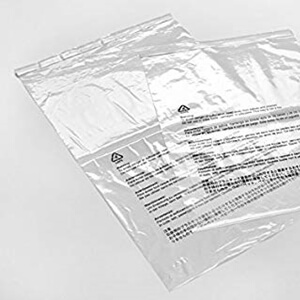
Polybag

Sticker

Hanger

Hangtag
Benefits of Packaging-Reduced Clothing
Packaging-reduced clothing offers a range of benefits to both clothing manufacturers and consumers. Key benefits include reduced waste and environmental impact; company cost savings, improved brand image, and consumer loyalty.
Manufacturers can significantly decrease the waste generated by reducing the amount of packaging used in clothing production and distribution. This not only helps to reduce the fashion industry's environmental impact but can also result in cost savings for companies by reducing the number of materials needed for packaging and shipping.
As consumers become more environmentally conscious, they increasingly seek sustainable products and are more likely to support brands prioritizing sustainability. By offering packaging-reduced clothing, companies can differentiate themselves from competitors and build stronger relationships with consumers passionate about sustainability. In addition, packaging-reduced clothing can help companies to improve their brand image and increase consumer loyalty.
Several examples of companies have successfully implemented packaging-reduced clothing and have experienced the benefits of doing so. For instance, Swedish fashion brand Filippa K has implemented a program called "Front Runners," which focuses on sustainability and includes packaging-reduced clothing. Through this program, the company has reduced its carbon footprint and improved its brand image among sustainability-conscious consumers.
Overall, packaging-reduced clothing offers a range of benefits to both clothing manufacturers and consumers, making it a vital focus of the sustainable fashion movement.
Comparison with traditional clothing packaging
Traditional clothing packaging, including plastic bags, hangers, tags, and cardboard boxes, significantly contributes to the global waste problem. The fashion industry produces over 92 million tons of textile waste yearly, much of which comes from packaging materials. Additionally, traditional packaging requires significant natural resources, such as water, energy, and raw materials.
In contrast, packaging-reduced clothing aims to minimize waste and environmental impact by using alternative packaging materials, such as recycled or biodegradable materials, or eliminating packaging. This approach reduces waste and resource depletion and offers cost savings for companies, as they can save on packaging materials and transportation costs.
However, packaging-reduced clothing may appeal to only some consumers, as some may prefer the traditional unboxing experience and perceive dresses without packaging as lower quality or less valuable. Moreover, implementing packaging-reduced clothing can be challenging for companies, as they need to consider product protection, hygiene, and regulatory requirements.
Despite these challenges, many companies have successfully implemented packaging-reduced clothing and reaped the benefits. For example, Patagonia, a leading outdoor clothing company, reduced its plastic packaging waste by 68% by switching to 100% recycled and recyclable packaging. Similarly, the clothing brand Reformation eliminated plastic packaging and replaced it with compostable bags made from cornstarch.
In conclusion, while traditional clothing packaging has a significant environmental impact, packaging-reduced clothing offers a promising solution to reduce waste and resource depletion in the fashion industry. However, companies must carefully consider the advantages and challenges of implementing packaging-reduced clothing and work to educate consumers on the benefits of sustainable fashion.
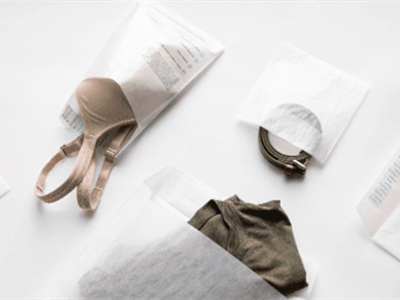
Eliminating Packaging
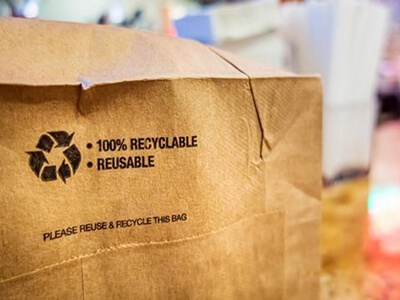
Recycled and Recyclable Packaging

Compostable Bags
Section 2: The Environmental Impact of Clothing Packaging
Statistics on the environmental impact of clothing packaging
Clothing packaging significantly impacts the environment, with staggering amounts of waste generated every year. According to the Environmental Protection Agency, in 2018 alone, the United States generated over 17 million tons of textile waste, with only 15% being recycled or donated. Clothing packaging accounts for a significant portion of this waste, with most packaging materials ending up in landfills, where they take hundreds of years to decompose.
In addition to the waste generated, clothing packaging also significantly impacts natural resources. The production of packaging materials such as plastic, paper, and cardboard requires using fossil fuels, water, and other resources. For example, the output of one ton of plastic generates 3.8 tons of greenhouse gas emissions and requires over 1,000 liters of water.
As consumers become more aware of the environmental impact of their choices, there is a growing demand for sustainable alternatives to traditional clothing packaging. Companies are responding to this demand by exploring eco-friendly packaging options that are more environmentally friendly and reduce waste.
The need for eco-friendly alternatives
Given the significant impact that clothing packaging has on the environment, there is a growing need for eco-friendly alternatives. Traditional packaging materials such as plastic, paper, and cardboard hurt the environment. For example, according to the Environmental Protection Agency, in 2018, over 17 million tons of textile waste were generated in the United States. Only about 15% of this waste was recovered for recycling. This waste contributes to the depletion of natural resources and increased greenhouse gas emissions.
Many companies are exploring alternative, sustainable packaging materials to address this problem. These materials include biodegradable plastics, recycled paper and cardboard, and organic fabrics. Biodegradable plastics are made from renewable materials and are designed to break down naturally in the environment, reducing the amount of waste generated. Recycled paper and cardboard are made from waste materials, reducing the number of natural resources used in production. Organic fabrics can be used as packaging material and have the added benefit of being compostable, further reducing waste.
As consumers become more environmentally conscious, the demand for eco-friendly packaging is increasing. Companies that invest in sustainable packaging alternatives are reducing their environmental impact and positioning themselves as leaders in the movement toward a more sustainable fashion industry.
Examples of sustainable packaging materials
Recycled materials: Using recycled materials such as recycled paper, cardboard, and plastic can significantly reduce the environmental impact of clothing packaging. These materials are readily available and can be recycled again, creating a closed-loop system.
Biodegradable materials: Biodegradable materials such as corn starch-based plastics, bamboo, and seaweed-based packaging can decompose naturally without harming the environment. These materials are a great alternative to traditional plastics and can be composted at the end of their life cycle.
Reusable packaging: Reusable packaging, such as cloth bags and boxes, can be used repeatedly, reducing waste and the need for single-use packaging. These materials can be made from eco-friendly materials and designed to be aesthetically pleasing, adding value to the product.
Minimalist packaging: Minimalist packaging is a trend that involves using minimal packaging material to reduce waste and costs, such as using a simple paper tag or a biodegradable string instead of a plastic label or hanger. This approach can also positively affect consumer perception, as it gives the impression of a more conscious and sustainable brand.
Innovative materials: Innovative materials such as mushroom-based packaging and plant-based plastics are emerging as sustainable alternatives to traditional materials. These materials have the potential to reduce the environmental impact of clothing packaging significantly and are increasingly being adopted by forward-thinking companies.
By using these sustainable packaging materials, companies can significantly reduce their environmental impact and create a more sustainable future for the fashion industry.

Biodegradable Plastics
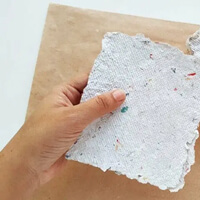
Recycled Paper

Seaweed-based Packaging

Cloth Bags

Minimalist Packaging

Mushroom-based Packaging
Section 3: The Manufacturing Process of Packaging-Reduced Clothing
How packaging-reduced clothing is made
Packaging-reduced clothing can be made using various methods and materials. One common approach is to use reusable or biodegradable packaging materials. This includes using recycled paper or cardboard boxes that the consumer can reuse or easily recycle.
Another method is to eliminate unnecessary packaging. For example, some clothing brands have adopted a "no packaging" policy for online orders. Instead of plastic bags or boxes, the clothing is shipped in simple, recyclable envelopes.
In addition, some clothing manufacturers have started using alternative materials that reduce the need for packaging. This includes using hangers made from recycled materials or folding clothing to eliminate the need for plastic bags or other packaging materials.
Overall, the manufacturing process for packaging-reduced clothing involves reducing waste and using eco-friendly materials. This benefits the environment and can save companies money in the long run by reducing the cost of packaging materials and waste disposal.
Advantages and challenges of the production process
The production process of packaging-reduced clothing involves several strategies to minimize or eliminate the need for traditional packaging. Some of the key advantages of this process include the following:
Reduction of waste: By minimizing the use of packaging materials, manufacturers can significantly reduce the waste generated by the production process. This, in turn, can help to reduce the environmental impact of clothing production.
Lower costs: Packaging materials can be expensive, and reducing or eliminating their use can help to lower production costs. This can be particularly beneficial for smaller fashion brands with limited budgets.
Improved efficiency: Using alternative packaging strategies can help streamline the production process, making it more efficient and reducing the time required to manufacture clothing.
Despite these advantages, several challenges are associated with the production of packaging-reduced clothing. These include:
Limited availability of sustainable materials: While a growing number of sustainable packaging materials are available, they may not always be accessible to the source. This can make it difficult for manufacturers to incorporate these materials into their production processes.
Increased complexity: Developing alternative packaging strategies can be complex and may require significant research and development. This can be particularly challenging for smaller fashion brands that may need more resources to invest in these efforts.
Limited consumer education: Consumers may need to become more familiar with packaging-reduced clothing or its benefits. As a result, manufacturers may need to invest in educating consumers about this approach to sustainable fashion.
Overall, while there are challenges associated with the production of packaging-reduced clothing, the potential benefits make it a promising strategy for reducing the fashion industry's environmental impact. In the following section, we will explore how consumer behavior can play a role in the success of packaging-reduced clothing.
| Advantages of Packaging-Reduced Clothing | Challenges of Packaging-Reduced Clothing |
|---|---|
| Reduces waste generated by the production process, leading to a lower environmental impact | Limited availability of sustainable materials for alternative packaging strategies |
| Lowers production costs by reducing the use of expensive packaging materials | Increased complexity in developing and implementing alternative packaging strategies |
| Improves efficiency by streamlining the production process and reducing the time required to manufacture clothing | Limited consumer education and awareness of the benefits of packaging-reduced clothing |
| Helps promote sustainable fashion and reduce the negative environmental impact of the fashion industry | May require significant research and development efforts to develop effective alternative packaging strategies |
| Can be particularly beneficial for smaller fashion brands with limited budgets | May require investment in educating consumers about packaging-reduced clothing |
Case studies of successful packaging-reduced clothing brands
Several fashion brands have already adopted packaging-reduced clothing as a core business model. These brands have developed innovative strategies for minimizing or eliminating the need for traditional packaging while still delivering high-quality, sustainable clothing to their customers. Here are a few examples:
Patagonia: Patagonia is a well-known outdoor clothing brand that has made sustainability a crucial part of its mission. The company has implemented some strategies to reduce packaging waste, including using minimal product packaging and offering customers the option to choose packaging-free shipping.
Girlfriend Collective: Girlfriend Collective is a sustainable activewear brand that has made a name using recycled materials in its clothing. The company also takes a packaging-reduced approach, using a simple, recyclable polybag for shipping instead of traditional packaging materials.
Kotn: Kotn is a Canadian clothing brand focusing on ethically sourced, sustainable cotton. The company has implemented a packaging-reduced approach that includes using biodegradable shipping bags and sending receipts and other documentation via email instead of including them in the packaging.
These brands demonstrate that it is possible to adopt a packaging-reduced approach to clothing manufacturing without sacrificing quality or sustainability. By developing innovative strategies for reducing packaging waste, these companies are helping to pave the way for a more sustainable fashion industry.
In the next section, we will explore consumer behavior's role in the success of packaging-reduced clothing and the challenges that exist in educating consumers about sustainable fashion.
Section 4: Consumer Behavior and Packaging-Reduced Clothing
Factors that drive consumers to choose packaging-reduced clothing
As consumers become more aware of the fashion industry's environmental impact, there is a growing demand for sustainable clothing options. This includes a desire for packaging-reduced clothing that minimizes waste and reduces the ecological footprint of clothing production. Here are some factors that drive consumers to choose a packaging-reduced dress:
Environmental concerns: Many consumers desire to reduce their environmental impact and see sustainable fashion as a way to do so. Packaging-reduced clothing is beautiful to consumers who are concerned about the environmental effects of traditional clothing packaging.
Brand values: Consumers are increasingly interested in supporting brands that align with their values, including sustainability. Companies prioritizing sustainable practices, including packaging reduction, are more likely to attract consumers who share these values.
Convenience: While it may seem counterintuitive, some consumers are attracted to packaging-reduced clothing because it is more convenient. By eliminating excess packaging, these companies can offer a more streamlined, efficient shopping experience that appeals to busy consumers.
Cost savings: While sustainable clothing can sometimes come with a higher price tag, packaging-reduced clothing may be more affordable than traditional clothing due to reduced packaging costs. This can make it an attractive option for budget-conscious consumers.
Overall, consumer demand is a crucial driver of the shift towards packaging-reduced clothing in the fashion industry. As more consumers become aware of the environmental impact of traditional clothing packaging and seek out sustainable alternatives, we expect to see continued growth in this area.
However, there are also significant challenges in educating consumers about sustainable fashion and the benefits of packaging-reduced clothing. We will explore these challenges in the next section.
Challenges in educating consumers about sustainable fashion
While there is a growing demand for sustainable fashion, there are still significant challenges in educating consumers about the benefits of packaging-reduced clothing. Here are some of the key challenges:
Lack of awareness: Many consumers need to be aware of the environmental impact of clothing packaging or the benefits of packaging-reduced clothing. Educating consumers about these issues is a critical first step in driving demand for sustainable fashion.
Confusion about sustainability: For some consumers, the concept of sustainability can be confusing or overwhelming. There is a need for clear, simple messaging that helps consumers understand the environmental benefits of packaging-reduced clothing.
Perception of higher costs: While packaging-reduced clothing may be more affordable than traditional clothing due to reduced packaging costs, some consumers perceive sustainable fashion as more expensive. This perception can be a barrier to adoption.
Limited availability: While some brands specialize sustainably, packaging-reduced clothing has yet to be widely available in mainstream retail outlets. This limited availability can make it more difficult for consumers to access sustainable clothing options.
Lack of trust: For consumers new to sustainable fashion, there may be a lack of confidence in the quality or durability of packaging-reduced clothing. Brands prioritizing sustainability must build trust with consumers by offering high-quality, durable clothing that meets their expectations.
Overcoming these challenges will be critical in adopting packaging-reduced clothing and other sustainable fashion options. In the next section, we will explore the potential of packaging-reduced clothing in the consumer market and the implications for the future of sustainable fashion.
The potential of packaging-reduced clothing in the consumer market
Despite the challenges in educating consumers about sustainable fashion, packaging-reduced clothing has significant potential in the consumer market. Here are some of the key factors driving this potential:
Growing demand for sustainable fashion: As we discussed earlier, the growing demand for sustainable fashion is driven by increased awareness of environmental issues and the desire to make more conscious consumer choices.
Cost savings for brands: By reducing packaging, brands can save on materials, shipping, and storage costs. This can allow them to offer more affordable clothing options to consumers, which can help to drive adoption.
Improved brand reputation: Brands prioritizing sustainability can benefit from the improved brand reputation and increased customer loyalty. Consumers are increasingly looking for brands that align with their values, and sustainability is becoming a key consideration for many.
Innovation opportunities: The move towards packaging-reduced clothing has created opportunities for innovation in the fashion industry. Brands are experimenting with new materials and production methods to create sustainable clothing options that are both functional and fashionable.
As more consumers become aware of the benefits of packaging-reduced clothing and as more brands adopt sustainable fashion practices, we expect to see continued growth in the market for sustainable fashion. This has important implications for the future of the fashion industry as it moves towards a more sustainable and responsible model of production and consumption.
Conclusion
In this article, we have explored the rise of sustainable fashion, focusing on packaging-reduced clothing. We have defined the concept of packaging-reduced clothing, discussed the environmental impact of clothing packaging, and explored the manufacturing process and case studies of successful packaging-reduced clothing brands. We have also looked at the challenges in educating consumers about sustainable fashion and the potential of packaging-reduced clothing in the consumer market.
Sustainable fashion is a rapidly growing movement driven by consumer demand, brand innovation, and the need for more responsible production and consumption practices. By supporting sustainable fashion and choosing packaging-reduced clothing, consumers and businesses can play a critical role in building a more sustainable and equitable future.
